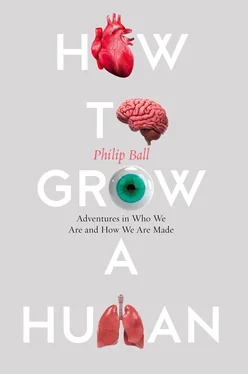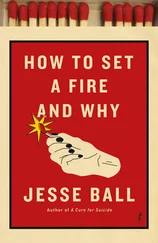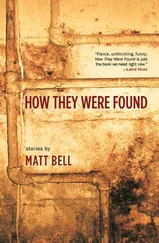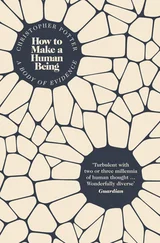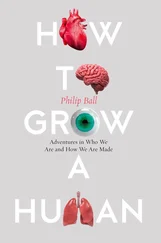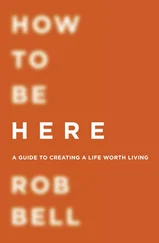Schwann developed these ideas while working in Berlin under the guidance of physiologist Johannes Müller. One of Schwann’s colleagues in Müller’s laboratory was Matthias Jakob Schleiden, with whom he collaborated on the development of the cell theory. Schleiden’s prime interest was plants, which were more easily seen under the microscope to have tissues made from a patchwork of cells, their walls constituting emphatic physical boundaries. This structure wasn’t always evident for animal tissues (especially hair and teeth), but Schwann and Schleiden were convinced that cell theory could offer a unified view of all living things.
Schleiden believed that cells were generated spontaneously within the organisms – an echo of the notion of “spontaneous generation” of living matter that many scientists still accepted in the early nineteenth century. But he was shown to be wrong by another of Müller’s students, Robert Remak, who showed that cells proliferate by dividing. Remak’s discovery was popularized – without attribution – by yet another Müller protégé, Rudolf Virchow, who tends now to be given the credit for it. All cells, Virchow concluded, arise from other cells: as he put it in Harveian manner, omnis cellula e cellula . New cells are created from the division of existing ones, and they grow between successive divisions so that this series of splittings doesn’t result in ever tinier compartments. Virchow proposed that all disease is manifested as an alteration of cells themselves.
Virchow was the kind of person only the nineteenth century could have produced – and perhaps indeed only then in Germany, with its notion of Bildung , a cultivation of the intellect that encouraged the emergence of polymaths like Goethe and Alexander von Humboldt. Virchow studied theology before taking up medicine in Berlin. While establishing himself as a leading pathologist and physician, he also became a political activist and writer and was involved in the uprisings of 1848. As if to demonstrate that nothing was simple in those times, this eminent biologist and religious agnostic was also profoundly opposed to Charles Darwin’s theory of evolution, of which his student Ernst Haeckel was Germany’s foremost champion.
Virchow thus had fingers in many pies; but in his view they were different slices of the same pie. The influence of politics, ideology and philosophy on science is always clearer in retrospect, and that’s nowhere more apparent than in the physiology of the nineteenth century. For Schwann, “each cell is, within certain limits, an Individual, an independent Whole”: an idea indebted to the Enlightenment celebration of the individual. The cell was a living thing – as the physiologist Ernst von Brücke put it in 1861, an “elementary organism” – which meant that higher organisms were a kind of community, a collaboration of so many autonomous, microscopic lives, in a manner that paralleled the popular notion of the nation state as the collective action of its citizens. Meanwhile, Schwann’s conviction of the cellular nature of all life, implying a shared structural basis for both plants and animals, was motivated by his sympathy for the German Romantic philosophical tradition that sought for universal explanations.
For Virchow, this belief in tissues and organisms as cellular collectives was more than metaphor. It was the expression writ small of a principle that applied to politics and society. He was convinced that a healthy society was one in which each individual life depended on the others and which had no need of centralized control. “A cell … yes, that is really a person, and in truth a busy, an active person,” he wrote in 1885. “What the individual is on a grand scale, the cell is that and perhaps even more on a small one.”
Life itself, then, showed for Virchow how otiose and mistaken was the centrist doctrine of the Prussian statesman Otto von Bismarck, who at that time was working towards the unification of the German states. Virchow attacked Bismarck’s policies at every opportunity and denounced his militaristic tendencies, so enraging the German nobleman that Bismarck challenged Virchow to a duel. The physiologist shrugged it off, making Bismarck’s belligerent bluster seem like the aristocratic posturing of a bygone era.
The idea of the “germ” as a rogue microbial invader was the counterpart to the idea of a body as a community of collaborating cells. It was entirely in keeping with the political connotations of cell theory that germ theory blossomed in parallel. Once Louis Pasteur and Robert Koch showed in the nineteenth century that micro-organisms like bacteria can be agents of disease (“germs”), generations of children were taught to fear them. Germs are everywhere, our implacable enemies: it is “man against germs”, as the title of a 1959 popular book on microbiology put it. After all, hadn’t a bacillus been identified as the cause of cholera in 1854? Hadn’t Pasteur and Koch established bacteria as the culprits behind anthrax, tuberculosis, typhoid, rabies? These germs were nasty agents of death, to be eradicated with a thorough scrub of carbolic. And to be sure, the antiseptic routines introduced by the unjustly ridiculed Hungarian-German physician Ignaz Semmelweis in the 1840s (as if washing your hands before surgery could make any difference!), and later by Joseph Lister in England, saved countless lives.
This new view of disease had profound sociopolitical implications. The old notion of a disease-generating “miasma” – a kind of cloud of bad air – situated illness in a particular locality. But once disease became linked to contagion passed on between people , a different concept of responsibility and blame was established. The politicized and racialized moral framework for germ theory is very clear in the description of a French writer from 1885 who talked of disease as “coming from outside, penetrating the organism like a horde of Sudanese, ravaging it for the right of invasion and conquest.” This was the language of imperialism and colonialism, and disease was often portrayed as something dangerously exotic, coming from beyond the borders to threaten civilization. Those who supported contagion theory tended to be politically conservative; liberals were more sceptical.
From the outset, then, our cellular nature was perceived to entail a particular moral, political and philosophical view of the world and of our place within it.
* * *
We come from a union of special cells: the so-called gametes of our biological parents, a sperm and an egg cell. Perhaps because this fact is taught in primary schools – a reassuringly abstract vision of human procreation, typically presented with no hint of the confusing richness and peculiarity of stratagems and diversions it engenders – we forget to be astonished by it. That we begin as a microscopic next-to-nothing, a pinprick somehow programmed with potential, is remarkable and counter-intuitive. It’s slightly absurd to image that infants will casually accommodate this “fact of life”, which seems on reflection barely conceivable. Only their endless capacity to accept the magical with equanimity lets us get away with it.
And so it continues through the educational grades: cells exist, and that is all we need to know. School children are taught to label their parts: the oddly named bits like mitochondria, vacuoles, endoplasmic reticulum, the Golgi apparatus. What has all this to do with arms and legs, hearts, brains? One thing is sure: the cell is anything but a homunculus. In which case, where does the body come from?
What the cell and the body do have in common is organization . They aren’t random structures; there’s a plan.
But that word, so often bandied about in biology, is dangerous. It doesn’t seem likely that we can ever leach from the notion of a plan its connotations of foresight and purpose. To speak, as biologists do, of an organism’s “body plan” is to lay the ground for the idea that there exists somewhere – in the cell, for where else could it be? – a blueprint for it. But it is not merely by analogy, but rather as a loose parallel, that I would invite you then to wonder where exists the plan, the blueprint, for a snowflake. There’s a crucial distinction between living organisms and snowflakes, and it is this distinction that explains why snowflakes do not evolve one from the other via inheritance but are created de novo from the cold and humid winter sky. 1But there are good motivations for the comparison, for the body’s organization, like the snowflake’s, is an instantiation of a particular set of rules that govern growth.
Читать дальше
